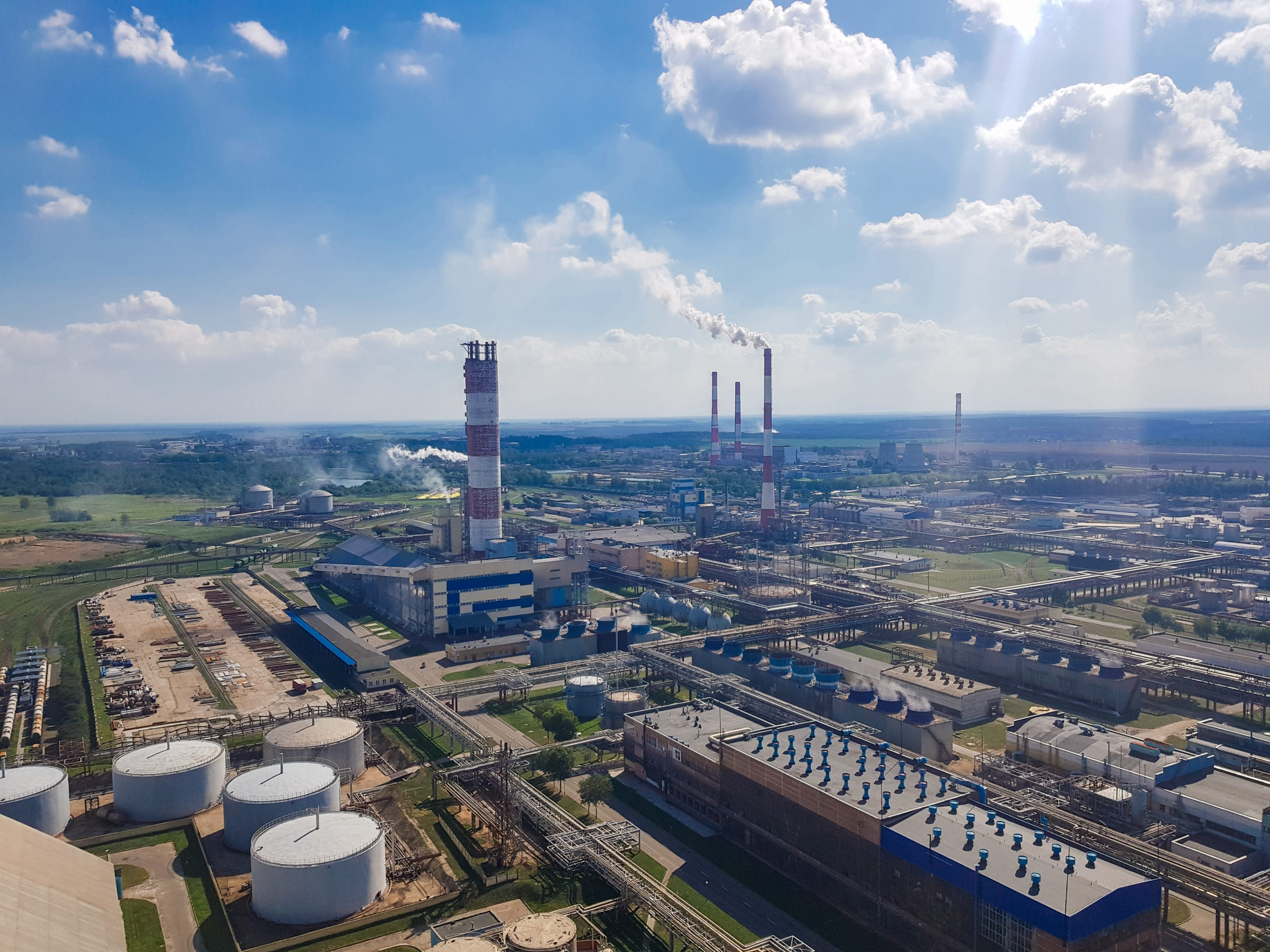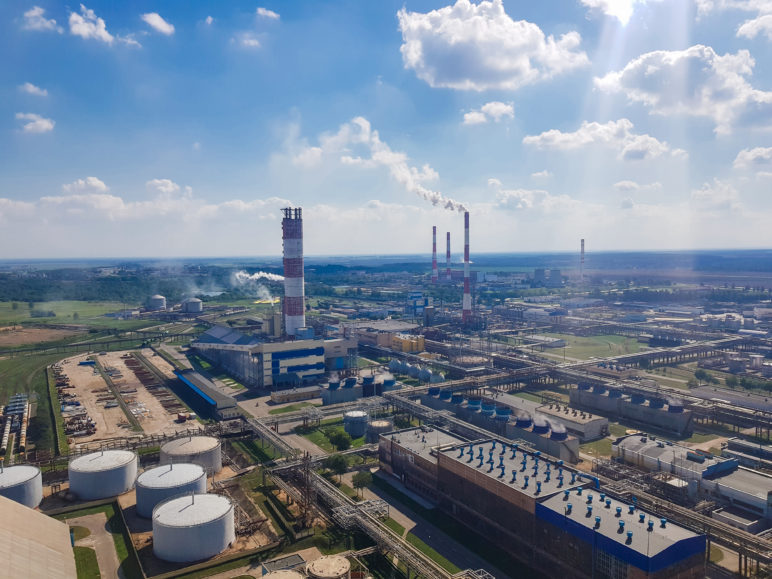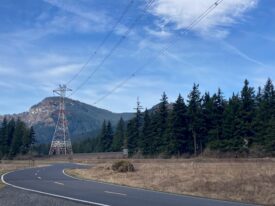With the release yesterday of a detailed climate review of the Kalama methanol proposal, Northwest policymakers have all the evidence they need to oppose it. The second supplementary environmental impact statement makes clear what Sightline has been saying all along: the project is an environmental disaster in the making. If built, the Kalama project would unleash a tsunami of fracking to supply all the gas the facility needs to make methanol. More gas, in fact—and therefore more fracking—than is used by all of the Northwest’s biggest cities combined. More gas—and more fracking—than is used by all the power plants in Washington.
If that sounds to you like it can’t possibly be a good thing for the climate, you would be right.
If built, the Kalama project would unleash a tsunami of fracking to supply all the gas the facility needs to make methanol.

Petrochemical boosters continue to claim that the project would be a boon to the climate. But, their analysis is both rhetorically deceptive and analytically wrong, which was made clear with the publication yesterday of the new report focused on the project’s carbon pollution. Energy modelers looked at the project forward and backward, right-side up and upside down (which is a big part of why the technically complex document is so confusing to read). What they found is that unequivocally and under every set of assumptions, the project would be one of the top polluters in Washington.
The best-guess analysis shows that pollution caused by the facility would be equivalent to 4.6 million tons of carbon dioxide pollution each year. That’s staggering. It means that this one project would be equal to around 5 percent of the state’s total climate emissions from all other activities combined. In short, it’s a scheme that is wildly out of step with every Northwest climate-related statute and aspiration on the books. And it gets worse, because different assumptions (for gas transportation leakage rates, end-use for the methanol, time-frame for evaluation climate potency, and other factors) show that it is possible the facility’s all-in carbon pollution could be as much as 9.4 million metric tons per year.
So where are the alleged climate benefits coming from? In a word, speculation.
The project backers are making claims teetering on the flimsy premise: that if Washington fails to supply vast quantities of gas-derived petrochemicals to China then Chinese manufacturers will do something even worse. (Namely, that China will make just as much olefin material, but do it with even-dirtier coal.) If that sounds like tortured logic, it’s because it is. It is essentially saying that scientific alarms be damned: we should double-down on climate pollution over the coming decades in the hopes that someone else won’t triple-down on it.
That’s a morally reckless approach to the climate. Moreover, a look at the details of the sophisticated new analysis reveals an even harder truth for the project. In the past, relying on simpler analyses, the project backers had claimed that the facility would reduce current greenhouse gas emissions by forcing Chinese coal-to-methanol plants off line. Yet the new study shows something very different: that current global greenhouse gas emissions would instead increase substantially if the project were built. So now the project backers have switched tactics and are arguing, incorrectly, that greenhouse gas emissions would increase even more if they aren’t permitted to build it.
The analysis underlying their argument is paper thin. The whole argument rests on the notion that Kalama methanol would “displace” dirtier forms of energy in Chinese and global markets. It’s the same faulty line of reasoning that has been deployed by virtually every one of the enormous fossil fuel export projects in the history of the thin green line movement. The displacement argument is based on the false belief that economic modeling can accurately predict global fuel markets, technology developments, Chinese consumer behavior, and regulations for the next 40 years. It should be especially clear in a turbulent year like this one that our models often cannot accurately forecast most of these things even for a single year.
We do know one thing for sure: the project would cause a huge amount of climate pollution. It would boost climate emissions “upstream” (from fracking and piping the gas), on-site (as the petrochemical refinery converts gaseous methane into the liquid petrochemical methanol), and “downstream” (from converting the methanol into plastics or vehicle fuel, and then burning that fuel).
Let’s be crystal clear. There is absolutely no sense in which the Kalama methanol project would “reduce” or “remove” carbon emissions. It would add carbon pollution—a lot of it.
The petrochemical backers are spinning another yarn too: that the project comes at no cost to taxpayers. That’s bunk.
Let’s be crystal clear. There is absolutely no sense in which the Kalama methanol project would “reduce” or “remove” carbon emissions. It would add carbon pollution—a lot of it.

The fact is taxpayers would be underwriting the project at almost every turn. The Port of Kalama is asking for a $11.5 million grant from the US Department of Transportation to build a dock for the project, while the private company is pitching the US Department of Energy on a whopping $2 billion loan guarantee. The project backers are exploiting every loophole they can to avoid paying taxes and sniffing out every public subsidy, including a fair number of exemptions closer to home. Experts estimate that the Kalama project would avoid $143 million in state and local taxes under current state law. The corporate owner of the project, Pan Pacific Energy, has already received between $150,000 and $350,000 in CARES Act loans. According to Propublica, the loan was to maintain 8 jobs, and it can be forgiven entirely under certain circumstances.
The new analysis should serve as the final nail in the coffin for the project. It’s disappointing that its backers are continuing to weave fanciful tales about what it means. But it’s consistent with their behavior over the past five years during which time they lied repeatedly to the public and to state regulators about the project’s true purpose and impact. They told their investors (repeatedly) that the methanol would be burned in vehicles while all the time telling regulators and the public (repeatedly) that it was instead all for plastics. The difference is millions of tons of carbon pollution, according to the new impact state, as recent OPB reporting makes clear. The petrochemical lobby shouldn’t be allowed to twist reality again.
Eric de Place, director of Thin Green Line, spearheads Sightline’s work on energy policy. Known as a leading expert on coal, oil, and gas export plans in the Pacific Northwest, he researches and writes about a range of issues connected to fossil fuel transport, including carbon emissions, local pollution, transportation system impacts, rail policy, and economics. He has a master’s degree in philosophy from the University of Notre Dame. Find his latest research here. For press inquiries, please email Anna Fahey.
Sightline is a 501(c)3 non-profit organization and does not support, endorse, or oppose any candidate or political party.











Melissa Spear
Where is this project in the decision making process? What can I (the public) do to influence the outcome?
Teresa Flynn
Thank you , for. All the fantastic reporting …Kalama resident
Shaun Hubbard
Excellent reporting, as usual! Thank you for telling it like it is! Ecology is accepting comments from the public until October 2. Learn more here: https://ecology.wa.gov/Regulations-Permits/Permits-certifications/Shoreline-permits-enforcement/Northwest-Innovation-Works-Kalama
Harman Harkema
No way should this plant be build and implemented.
Bev Cooke
I have watched the petrochemical slow pollution of California and am concerned about the same kind of thing happening in the Kalama area. I also think that if this plant were to be built, the potential for massive leakage from earthquake or terrorist activity could turn our area into an major fire feed which would proceed up the valleys and mountain sides and be unstoppable. We just got rid of Trojan lets not build another one. This does not address the climate stuff, but is something that could in fact be a very real danger.